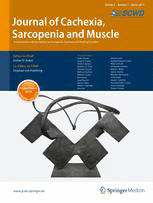
“Prior studies have evaluated the use of various constituents of cannabis for their anti-seizure effects. Specifically, cannabidiol, a non-psychoactive component of cannabis, has been investigated for treatment-resistant epilepsy, but more information is needed particularly on its use in a pediatric population.
OBJECTIVE:
The objective of this study was to evaluate the pharmacokinetics and safety of a synthetic pharmaceutical-grade cannabidiol oral solution in pediatric patients with treatment-resistant epilepsy.
RESULTS:
Overall, 61 patients across three cohorts received one of three doses of cannabidiol oral solution (mean age, 7.6 years). The age composition was similar in the three cohorts. There was a trend for increased cannabidiol exposure with increased cannabidiol oral solution dosing, but overall exposure varied. Approximately 2-6 days of twice-daily dosing provided steady-state concentrations of cannabidiol. A bi-directional drug interaction occurred with cannabidiol and clobazam. Concomitant administration of clobazam with 40 mg/kg/day of cannabidiol oral solution resulted in a 2.5-fold increase in mean cannabidiol exposure. Mean plasma clobazam concentrations were 1.7- and 2.2-fold greater in patients receiving clobazam concomitantly with 40 mg/kg/day of cannabidiol oral solution compared with 10 mg/kg/day and 20 mg/kg/day. Mean plasma norclobazam values were 1.3- and 1.9-fold higher for patients taking clobazam plus 40 mg/kg/day of cannabidiol oral solution compared with the 10-mg/kg/day and 20-mg/kg/day groups. All doses were generally well tolerated, and common adverse events that occurred at > 10% were somnolence (21.3%), anemia (18.0%), and diarrhea (16.4%).
CONCLUSIONS:
Inter-individual variability in systemic cannabidiol exposure after pediatric patient treatment with cannabidiol oral solution was observed but decreased with multiple doses. Short-term administration was generally safe and well tolerated.”
https://www.ncbi.nlm.nih.gov/pubmed/31049885
https://link.springer.com/article/10.1007%2Fs40263-019-00624-4








